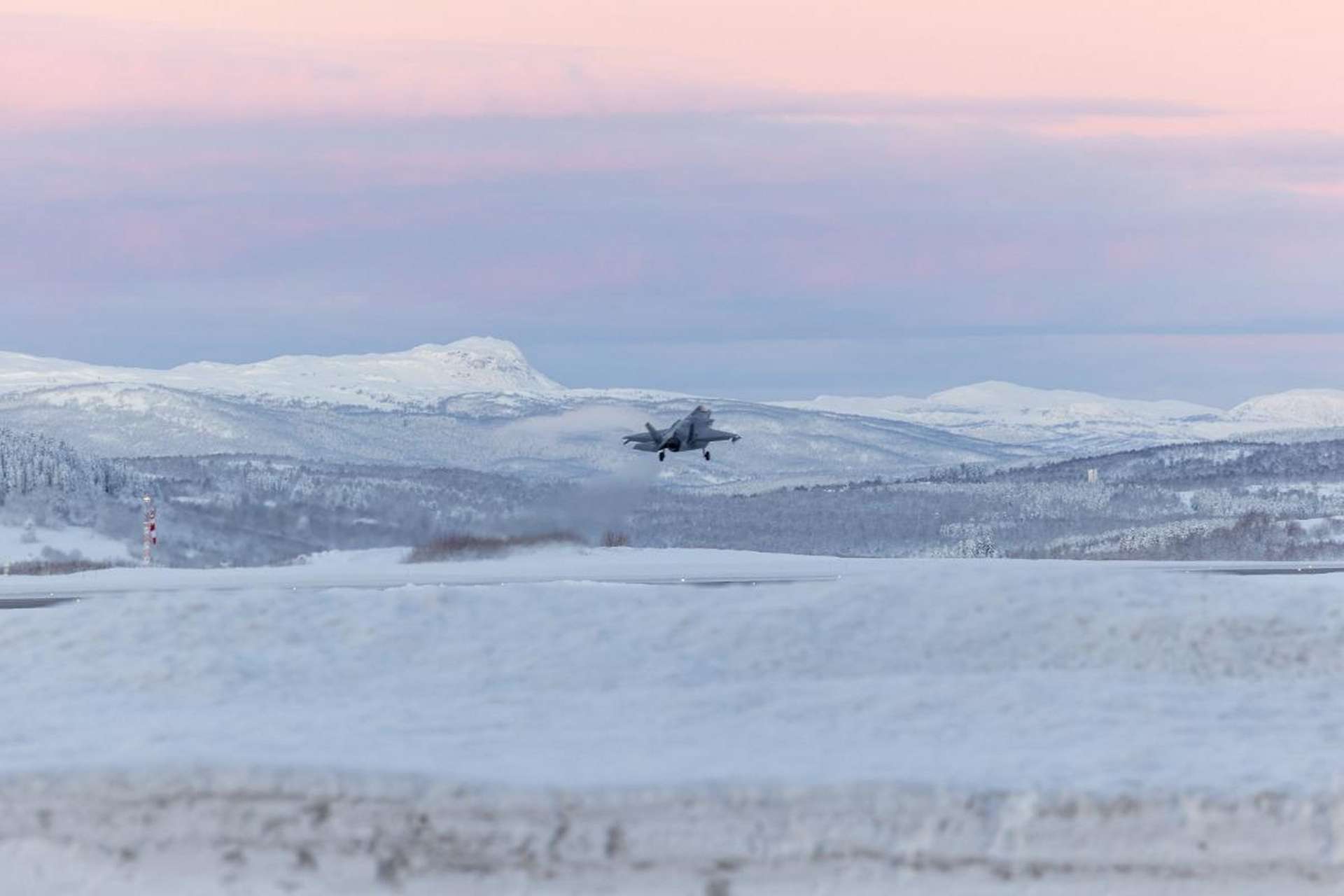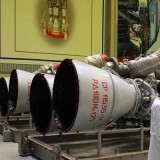Norwegian F-35 Jets Intercept Russian Bomber Force Near Arctic

{loadposition bannertop}
{loadposition sidebarpub}
On February 4, 2025, two Royal Norwegian Air Force F-35 jets were deployed in response to the approach of two Russian TU-95 Bear H bombers, escorted by two Su-27 Flanker-D fighters, which came close to NATO airspace in the High North.
Follow Army Recognition on Google News at this link
A Norwegian F-35A Lightning II takes off from Evenes Air Station, scrambling for a NATO Air Policing mission. (Picture source: Norwegian MoD)
The Quick Reaction Alert (QRA) mission in Norway plays a crucial role in protecting both national security and NATO’s collective security. The rapid response of the F-35s was vital in ensuring the integrity of airspace in this strategically sensitive region. The F-35 pilots successfully located and identified the Russian aircraft, maintaining a cautious but vigilant distance, which allowed them to closely monitor the aircraft’s movements and gather essential intelligence, ensuring that the Russian bombers did not enter NATO airspace.
Major General Øivind Gunnerud, Chief of the Norwegian Air Force, emphasized the importance of such operations: “Our Quick Reaction Alert mission in the High North is essential for our national defense and NATO’s collective security. The ability to react swiftly ensures the safety of our airspace and highlights the strength of our allied forces in maintaining peace and stability.”
The F-35 Lightning II is a multi-role aircraft developed by Lockheed Martin, designed to meet the needs of several branches of the U.S. military and their allies around the world. It comes in several variants, each suited to specific missions, but all share advanced characteristics in terms of stealth, performance, and equipment. The aircraft made its first flight in 2006 with the F-35B model and entered service in 2015 for the F-35A variant. Its design is based on the X-35 aircraft, also developed by Lockheed Martin.
The F-35 is powered by a Pratt & Whitney F135 turbofan engine, capable of producing 178 kN of thrust, allowing the aircraft to reach a maximum speed of 1,700 km/h (Mach 1.6+) and climb to an altitude of 18,500 meters. It boasts an impressive range, reaching up to 1,080 km for the F-35A model, with an operational range of over 2,800 km depending on the mission conditions. Its ability to carry up to 6,800 kg of armament on external pylons, as well as its internal configuration allowing for a wide range of weapons, provides it with the flexibility that makes it a strategic asset in various types of conflicts.
One of the most notable features of the F-35 is its stealth, made possible by its design and advanced equipment, including the AN/APG-81 radar and the AN/AAQ-37 infrared sensor. These technologies allow the aircraft to detect threats from long distances while being difficult to detect by enemy radars. The aircraft is equipped with a GAU-22 25mm cannon and can carry up to 2,800 kg of armament in its internal bays, in addition to external loads.
The F-35 was built to meet the needs of modern air forces, combining exceptional performance with increased survivability in high-intensity warfare environments. Each variant of the aircraft has been specifically designed for particular missions: the F-35A, intended for conventional air forces; the F-35B, capable of vertical takeoff and landing for naval operations; and the F-35C, designed for aircraft carriers. Since it entered into service, the F-35 has become a key element of the air defense of the countries that have adopted it, with more than 1,000 units produced to date.
This interception underscores the ongoing importance of NATO’s Air Policing mission. The ability to detect, intercept, and monitor potential threats in the airspace is crucial for maintaining regional stability. NATO’s ability to quickly respond to communication disruptions, airspace violations, or activities deviating from international aviation standards is a key element of its overall security strategy.

{loadposition bannertop}
{loadposition sidebarpub}
On February 4, 2025, two Royal Norwegian Air Force F-35 jets were deployed in response to the approach of two Russian TU-95 Bear H bombers, escorted by two Su-27 Flanker-D fighters, which came close to NATO airspace in the High North.
A Norwegian F-35A Lightning II takes off from Evenes Air Station, scrambling for a NATO Air Policing mission. (Picture source: Norwegian MoD)
The Quick Reaction Alert (QRA) mission in Norway plays a crucial role in protecting both national security and NATO’s collective security. The rapid response of the F-35s was vital in ensuring the integrity of airspace in this strategically sensitive region. The F-35 pilots successfully located and identified the Russian aircraft, maintaining a cautious but vigilant distance, which allowed them to closely monitor the aircraft’s movements and gather essential intelligence, ensuring that the Russian bombers did not enter NATO airspace.
Major General Øivind Gunnerud, Chief of the Norwegian Air Force, emphasized the importance of such operations: “Our Quick Reaction Alert mission in the High North is essential for our national defense and NATO’s collective security. The ability to react swiftly ensures the safety of our airspace and highlights the strength of our allied forces in maintaining peace and stability.”
The F-35 Lightning II is a multi-role aircraft developed by Lockheed Martin, designed to meet the needs of several branches of the U.S. military and their allies around the world. It comes in several variants, each suited to specific missions, but all share advanced characteristics in terms of stealth, performance, and equipment. The aircraft made its first flight in 2006 with the F-35B model and entered service in 2015 for the F-35A variant. Its design is based on the X-35 aircraft, also developed by Lockheed Martin.
The F-35 is powered by a Pratt & Whitney F135 turbofan engine, capable of producing 178 kN of thrust, allowing the aircraft to reach a maximum speed of 1,700 km/h (Mach 1.6+) and climb to an altitude of 18,500 meters. It boasts an impressive range, reaching up to 1,080 km for the F-35A model, with an operational range of over 2,800 km depending on the mission conditions. Its ability to carry up to 6,800 kg of armament on external pylons, as well as its internal configuration allowing for a wide range of weapons, provides it with the flexibility that makes it a strategic asset in various types of conflicts.
One of the most notable features of the F-35 is its stealth, made possible by its design and advanced equipment, including the AN/APG-81 radar and the AN/AAQ-37 infrared sensor. These technologies allow the aircraft to detect threats from long distances while being difficult to detect by enemy radars. The aircraft is equipped with a GAU-22 25mm cannon and can carry up to 2,800 kg of armament in its internal bays, in addition to external loads.
The F-35 was built to meet the needs of modern air forces, combining exceptional performance with increased survivability in high-intensity warfare environments. Each variant of the aircraft has been specifically designed for particular missions: the F-35A, intended for conventional air forces; the F-35B, capable of vertical takeoff and landing for naval operations; and the F-35C, designed for aircraft carriers. Since it entered into service, the F-35 has become a key element of the air defense of the countries that have adopted it, with more than 1,000 units produced to date.
This interception underscores the ongoing importance of NATO’s Air Policing mission. The ability to detect, intercept, and monitor potential threats in the airspace is crucial for maintaining regional stability. NATO’s ability to quickly respond to communication disruptions, airspace violations, or activities deviating from international aviation standards is a key element of its overall security strategy.





